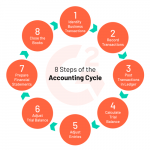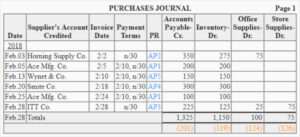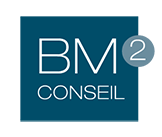
Then, you can multiply the $92,350 in taxable earnings by the 15.3% self-employment tax rate to determine how much of your money will be due in self-employment taxes. Self-employment tax helps fund programs like Social Security taxes and Medicare taxes. While full-time employees also pay taxes to support these programs, they split the 15.3% tax rate with employers as part of the Federal Insurance Contributions Act (FICA). Self-employed individuals are responsible for both the employer and employee portion of these taxes.
- Working with an adviser may come with potential downsides such as payment of fees (which will reduce returns).
- The second portion of your self-employment tax funds Medicare.
- This may influence which products we review and write about (and where those products appear on the site), but it in no way affects our recommendations or advice, which are grounded in thousands of hours of research.
- Then get ready to pay the self-employment tax, which is a tax you never had to pay as an employee.
- The law sets a maximum amount of net earnings that are subject to the Social Security tax.
You calculate your self-employment tax on Schedule SE and report that amount in the « Other Taxes » section of Form 1040. In this way, the IRS differentiates the SE tax from the income tax. • When calculating your self-employment income, you are allowed to subtract half of your self-employment tax from your income before applying the tax rate. Self-employment tax is a tax consisting of Social Security and Medicare taxes primarily for individuals who work for themselves. It is similar to the Social Security and Medicare taxes withheld from the pay of most wage earners. Our content is not intended to provide legal, investment or financial advice or to indicate that a particular Capital One product or service is available or right for you.
However, you figure self-employment tax (SE tax) yourself using Schedule SE (Form 1040 or 1040-SR). Also, you can deduct the employer-equivalent why is accounting important portion of your SE tax in figuring your adjusted gross income. Wage earners cannot deduct Social Security and Medicare taxes.
How to Claim a 1099-R for Total Distribution
The self-employment tax is designed to be collected from workers who are considered self-employed and don’t otherwise pay withholding taxes. This includes sole proprietors, freelancers, and independent contractors who carry on a trade or business. A member of a partnership that carries on a trade or business may also be considered to be self-employed by the Internal Revenue Service (IRS). Self-employed individuals must pay self-employment tax as a condition of receiving Social Security benefits upon retirement. Under Section 2042 of the Small Business Jobs Act, a deduction, for income tax purposes, is allowed to self-employed individuals for the cost of health insurance.

Workers who are self-employed aren’t subject to the withholding tax. As such, the IRS requires taxpayers to make quarterly estimated tax payments in order to cover their self-employment tax obligation, in addition to their federal and state income tax obligation. Federal law sets the self-employment tax rate at 15.3 percent of net earnings. This rate is the combined total of a 12.4 percent Social Security tax and a 2.9 percent Medicare tax. For 2020, the Social Security tax for self-employed individuals is only due on the first 137,700 dollars of net earnings.
Credits & Deductions
To get a clearer sense of how much of your money is going toward Social Security taxes versus Medicare taxes, you could multiply your taxable earnings by the smaller tax rates that apply to each separate program. For example, you can multiply the $92,350 in taxable earnings by 12.4% to determine that $11,451.40 will be taken in Social Security taxes. And you can multiply the $92,350 in taxable earnings by 2.9% to determine that $2,678.15 will be taken in Medicare taxes. For Medicare taxes, employees and employers are taxed at a rate of 1.45%, meaning self-employed workers are taxed at 2.9%. As tax season approaches, you might be starting to gather up the materials you’ll need to file your taxes.

This is not an offer to buy or sell any security or interest. Working with an adviser may come with potential downsides such as payment of fees (which will reduce returns). There are no guarantees that working with an adviser will yield positive returns. The existence of a fiduciary duty does not prevent the rise of potential conflicts of interest.
Products
When you are employed, you pay one half of the total FICA taxes through payroll withholding and your employer pays the other one half of FICA taxes on your behalf. A lot of terms get thrown around when it comes to the tax season and your adjusted gross income (AGI) is one of them. When the employee wages are removed from the future covered earnings area, the FICA is calculated exactly as expected. These costs can be subtracted from your self-employment revenue and lower your taxable income, reducing the amount of money you owe at the end of the tax year. Luckily, you can deduct the “employer” portion of the tax, which is 7.65%.

See Estimated Tax Payments for more details about how the payments work. As of 2022, self-employed individuals pay 2.9% on their first $200,000 of net earnings for Medicare. And backed by CPAs to provide you with an accurate tax review. File your 1099 form with the help of FlyFin’s expert CPA team and deduct all your business expenses, such as home office expenses, and you can claim office equipment tax deductions as well. Self-employment tax is the Federal Insurance Contributions Act (FICA) tax that a person who is self-employed must pay on profits. The taxes consist of the Social Security taxes and Medicare taxes which are separate and operate differently.
What is Self-Employment Tax?
To file these quarterly payments, you use Form 1040-ES, Estimated Tax for Individuals. You will need your annual tax return from the previous year to correctly fill out this form. Filling out the form’s worksheet will determine whether you need to file quarterly estimated tax. It’s also important to note that if you’re self-employed, you may have to file estimated taxes quarterly in order to avoid penalties from the IRS.
- So, you’ve started a business or decided to freelance, and freed yourself from the daily grind of that old job.
- Here is a list of our partners and here’s how we make money.
- Under Section 2042 of the Small Business Jobs Act, a deduction, for income tax purposes, is allowed to self-employed individuals for the cost of health insurance.
Self-employed workers aren’t subject to tax withholding, so making quarterly estimated tax payments helps ensure that all self-employment and income tax obligations are still being met. Under most circumstances, the self-employment tax must be paid during the year by filing quarterly estimated tax payments. If you wait to pay the tax until the following April when your annual tax return is due, the IRS may add a penalty charge.
The tax is divided into two parts—Social Security and Medicare tax—and how much you pay for each part is calculated differently. Read on for more about self-employment taxes and how to calculate them. A self-employed person having net income of exactly $160,200 in 2023 must remit FICA taxes of $24,510.60 ($160,200 X 15.3%). A self-employed person having net income of exactly $147,000 in 2022 must remit FICA taxes of $22,491.
self-employment tax
The second portion of your self-employment tax funds Medicare. Unlike with Social Security tax, the Medicare tax applies to all of your net earnings regardless of how much you earn. If you have $150,000 of net earnings, as in the previous example, you must pay the 2.9% Medicare tax on the entire $150,000. To ensure that self-employed individuals still contribute toward Social Security and Medicare, the federal government passed the Self-Employed Contributions Act (SECA) in 1954. SECA established that self-employed individuals would be responsible to pay the whole 15.3% FICA.
If your business expenses come out to $5,000 or less, you may be able to file Schedule C-EZ instead of Schedule C. Other situations may require you to pay self-employment tax. For one, you still need to pay even if you are a U.S. citizen employed by a foreign government.
Contrary to what you may think, individuals typically pay self-employment tax on 92.35% of their net earnings—not on 100% of their full earnings. This may influence which products we review and write about (and where those products appear on the site), but it in no way affects our recommendations or advice, which are grounded in thousands of hours of research. Our partners cannot pay us to guarantee favorable reviews of their products or services.
Because your employer withheld money for Social Security, Medicare and income tax and sent that money to the government. When you’re an employee, you share that cost with your employer, with each of you paying a share of the FICA tax. Your share is automatically taken out of your paycheck so it doesn’t typically show up on your tax return.

Laissez un commentaire